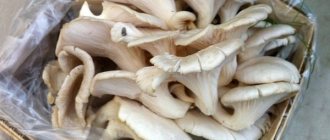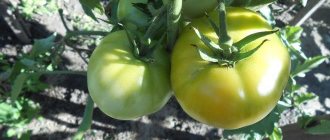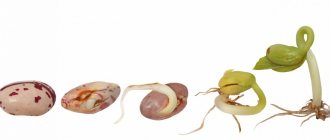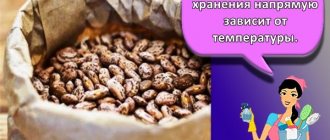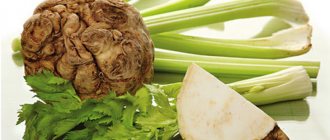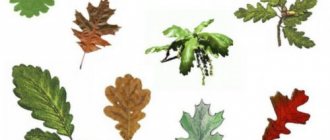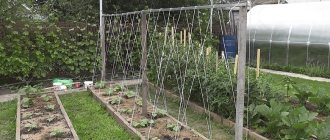Almost all chickens from farms sooner or later go to the table in the form of various dishes. It is important for suppliers and housekeepers to properly prepare birds for the feeding stage. Not only cutting is important, but also high-quality plucking. Removing the feather in compliance with certain nuances allows the meat to be stored longer and not lose its marketability. You will learn how to pluck a chicken from this article.
How to pluck a chicken?
Preparing for plucking
The main operation before plucking is proper slaughter. Incorrect actions at this stage lead to wing fractures and hematomas. With such “battle wounds,” the presentation of the carcass cannot be preserved even by removing the feathers as carefully as possible.
Experienced poultry farmers advise using metal cones for slaughtering chickens. The bird is placed on a daily fast ration (water is left) in an isolated cage. After 24 hours, they are hit on the head with an ax head and placed in the device. The neck and head are released through the lower narrow opening. The rest of the body is located inside the funnel with folded wings. The carotid artery is cut 10 mm from the auricle. The knife blade is held slightly tilted downwards. Then place the container under the cone and wait until the blood has completely drained.
Slaughtering chicken in a cone
Dead birds are not immediately frozen. She needs to stay in a cool place for 24 hours, otherwise the meat will become tough and lose its taste. It is advisable to pluck immediately after bleeding. It is almost impossible to remove feathers from a numb body without torn skin without first steaming it.
Actions before the procedure
A lot depends on how the bird was slaughtered. If the process was carried out incorrectly and the carcass acquired various fractures (wings, paws) and hematomas, it will not be possible to maintain its integrity and marketable shape under any circumstances.
To begin with, the chicken is isolated in a separate cage and the feed supply is stopped for a day, the supply of water for the bird is left. Next, she is stunned and placed in a specialized metal cone, with her head and neck exposed. The wings are folded. Now killing a bird is easy. Next, wait until the blood drains completely.
Plucking with tools
For private farmers and housewives, modern inventors have come up with mini-copies of industrial plucking equipment. The designs are simplified as much as possible and do not have vacuum or water components that remove waste from carcasses. They take up little space but bring a lot of benefits. The technique can be used for dry, hot, and combined methods. Preliminary preparation will correspond to the method. Next, 20-30 minutes of manual feather plucking will turn into 3-4 minutes of contact between the chicken and the apparatus.
Carcasses after plucking in the machine
There are 2 types of devices. Both are comfortable. If you have to deal with plucking occasionally, an attachment is more useful. If the number of birds is constantly large, it is better to choose a feather removal machine. Overall, the choice depends on personal preference. The negative side of this treatment: skin ruptures from very tightly fitting feathers are possible. To avoid this, the largest solid specimens are pulled manually and then the device is turned on.
You can purchase units in online stores, specialized sales points, or make them yourself.
Feather nozzle
It is a small shaft with rubber or rubber fingers. The type of nozzle is vaguely similar to a household brush. The device is worn on a drill, stationary or portable hammer drill, screwdriver, or electric sharpening machine. The only difference is the size.
Nozzle on a stationary machine
The nozzle is driven by a motor. Rotating, she knocks feathers out of their “skin nests” with her fingers. The bird can be held by hands or hung by its legs. Parts of the body are processed one by one. If a grinding machine or stationary punch is used, the chicken is brought under the fingers and turned in different directions.
Drill attachment
Prices for feather removal attachment for plucking poultry
Feather attachment for plucking poultry
Feather removal machine
De-feathering machines are like miniature centrifuges or vats. They are also equipped with fingers that are attached to the walls around the entire perimeter in several rows. At the bottom there is a tray where everything removed from the chicken flies. As a rule, the car has a 1.5 kW engine. It causes the container to rotate, and the protrusions knock down the pen.
Magazine pen remover
Some farmers make such devices themselves from plastic or metal containers, motors, pots, and old washing machines.
Homemade car from a tank
Bits are sold as spare parts for industrial equipment, so purchasing them is not difficult.
Homemade feather remover from a washing machine
Video - Do-it-yourself feather removal machine from a pan
Video - Feather removal machine from a washing machine
How long to keep broilers before slaughter
The poultry farmer must independently determine the timing of slaughter of broilers, but the starting point of slaughter is an increase in body weight. The killing of poultry begins after 85 days from the birth of broilers; their body weight should reach 3.5-4 kg. Raising chickens over 85 days old is unprofitable, as their development begins to slow down.
Be sure to read:
Why does a rooster crow at night or in the morning: how to stop him from crowing
Before killing a chicken, it is necessary to pre-treat it. It is strictly forbidden to give antibiotics to poultry 23 days before slaughter, and 13 days before slaughter, completely exclude gravel and fish waste from the diet.
How to effectively singe a chicken?
The plucked chicken must be singed. This stage is needed to remove stumps, fluff, pieces of feathers, and hairs. When heated by fire, the hemp falls out, and everything remaining burns out. You can first rub the carcass with flour, then the chances of burning the meat will decrease. This option will produce more soot, but it can be easily washed off with water. The chicken must be dry for searing. It is acceptable to use hand-held gas burners, open fires, and burners without dividers. Be sure to provide ventilation in the room.
One way to singe a chicken
Prices for various types of gas burners and blowtorches
Gas burners and blowtorches
The chicken is held by the legs and brought to the fire source using different parts of the carcass. In the case of a hand burner, it is enough to place the bird on the table and turn it over, moving the flame over it. In the same way, you can use straw or rolled paper to create an improvised torch.
Searing a chicken
2-3 seconds are enough for each section. Otherwise, the fat will begin to melt, the skin will scorch, fry or burst. After passing through the entire body, the meat is washed with running water.
How to pluck?
Dry method
It is used immediately after slaughter, when fluff is expected to be collected. The method is good in cases where slaughter is carried out during seasonal molting. In autumn, the feathers are removed without prior scalding, the skin is not damaged.
How to pluck a chicken by hand:
- During slaughter, chickens are hung upside down and their throats are cut with a sharp knife. The second option for slaughter: a chicken or rooster is held by the legs and wings, placed with its head on a stump, and the head is cut off with an ax. Then they hold the paws to let the blood drain.
- The uncooled carcass is left hanging and feather plucking begins immediately.
- The back and breast of broiler chickens are plucked in the direction opposite to growth; tail and flight feathers - vice versa.
- After plucking, they tar on a gas burner, removing the divider, or use a hand torch.
Important! The dry method is suitable for processing young meat breeds. Broilers are easier to feather than laying hens. The slaughter of meat breeds begins at 4-5 months, which coincides with the period of juvenile molting.
Processing carcasses using the dry method is acceptable for 1-2 birds: they do not have time to cool down and the feathers will easily separate. If there is an unexpected delay in work, the carcasses are scalded with boiling water and the remaining plumage is removed. This method is called combined.
Hot way
Photo:
The method of plucking feathers with soaking in hot water is universal, convenient for simultaneous processing of 3-10 carcasses. After steaming, the skin pores expand and cleaning is effortless.
However, here, too, compliance with the rules is required:
- Before slaughter, birds heat the water to a temperature of 70-800 C. The volume of hot water is adjusted according to the number of slaughtered carcasses.
- The chicken is immersed 5-6 times in a bucket filled 3/4 with water for 10-15 seconds. Do not pour hot water over the carcasses or steam them for more than 1 minute, since under the influence of high temperature the protein coagulates and the skin shrinks, tightly holding the feather cover. When plucking such a bird, the feathers are removed with damage to the skin, which makes it difficult to oil the carcasses and spoils the presentation.
- After letting the water drain , the bird is transferred to the work table. Holding by the neck, pluck the feathers on the chest and back, remove the feathers on the wings and tail in the direction of growth.
- After initial processing, the carcasses are processed over a burner flame, washed and gutting begins.
Important! During processing, attention is paid to plucking the wings: in this part of the carcass there is thin skin and strong thread-like feathers, which are removed with tweezers after tarring.
The hot method of plucking chicken is based on the physical properties of the bodies and is superior to the dry processing method in saving time. Disadvantage of the hot method: wet fluff is more difficult to sort for making pillows.
With the help of devices
Feather removal machine
For a large poultry farm, it is more convenient to use a feather removal machine: its cost will be recouped by saving time on processing poultry meat.
Manufacturers offer two types - with a centrifuge and a drum. Devices operating on the centrifuge principle are convenient for small breeds of poultry.
Inside the centrifuge there are beating fingers that easily remove feather cover during rotation.
They produce models that are additionally equipped with water supply mechanisms to prevent skin damage due to sliding.
Drum-type devices are a more convenient option for farmers breeding poultry of different breeds and sizes.
The second mechanical processing method, which speeds up the process, is a special attachment with hammer fingers, which is attached to an electric drill or other rotating tools.
This is an economical option for small personal farms. The principle of operation of attachments with striker fingers is the same as that of drum-type feather removal machines.
Application of chicken feather
About 200 g of small feathers and down are removed from each average rooster. A standard chicken yields approximately 130 g of the same product. Pure down from this amount takes up approximately 30 g. The material is a good filler for blankets, feather beds, pillows, and some types of jackets. It is used for decorative purposes when working with panels, bouquets, and decorations. Chicken down is often mixed with goose or duck down to make the filling more dense.
Chicken feather craft
A quality product can only be obtained with proper processing of poultry waste. During sorting, the edges (the hollow lower part of the rod) are broken off from the plates with hairs. The material is placed in bags made of cotton, gauze or chintz. It is important to prevent the down from getting dirty or getting wet. Sticky, caked hairs are unsuitable for further use. They serve as an excellent environment for the development of mold, rot, and the proliferation of parasites.
The down should be dried very well before storing.
The bags are not filled to capacity. It is necessary to leave an edge for later sewing for storage. Finished portions are washed with soapy water.
Decorative chicken feather pillows
Washing the pen before storage
Step 1. Prepare a solution of laundry soap, washing powder and boiling water. For 1 liter, 20 g of soap and 80 g of powder are required. The powder can be replaced with 2 tsp. Boers.
Laundry soap is an indispensable basis for a soap solution for processing fluff.
Step 2. Dip the hemmed bags of down into the prepared liquid for 30 minutes.
Step 3. Rinse the down thoroughly in warm and cool water several times.
Step 4. Squeeze lightly with the palm of your hand and hang the cloth bags in a ventilated area or in the sun. The main rule of drying is good air circulation so that the filler does not begin to rot from moisture.
chicken feather
Store completely dried pieces in a cardboard box until use. Shake slightly occasionally.
What to do with a pen
In addition to meat and offal, feathers and down are also valued among domestic chickens. They are not as expensive as goose ones, but can be used in various fields. On average, about 130 g of feathers are obtained from one chicken, and up to 200 g from a rooster, of which about 30 g is soft fluff.
This material is used:
- as stuffing for pillows, blankets and even outerwear;
- for creating paintings, decorative jewelry.
However, most housewives simply sell their valuable product to resellers at competitive prices. And the better the quality of the pen, the higher its cost.
To preserve the value of the material it is important:
- store it in gauze or cotton bags;
- do not allow it to get wet or dirty;
- Ventilate periodically to prevent mold and rot from developing.
Did you know? Due to the presence of calcium, iron, and B vitamins, chicken is an indispensable product in the prevention of heart problems and atherosclerosis.
At first glance, plucking chickens is a complex process, but, as in any other business, speed and quality come with practice. If you plan to regularly process birds, it is better to purchase a special attachment or feather removal machine. To obtain a tasty and healthy product, it is also important to gut the carcass correctly, which should not be forgotten.
What to do after the plucking process?
It is logical to continue plucking the chicken by gutting the carcass from the contents. It is thoroughly washed, a sharp knife and a special fork are prepared for removing the entrails. The table is covered with film to avoid excess dirt.
Chicken ready for gutting
An important rule of evisceration is to preserve the intestines and pancreas intact. Damage to their shells leads to spilling of the contents onto the meat. The pulp becomes saturated with an unpleasant taste and smell and becomes unsuitable for consumption.
Sequence of actions for gutting:
- removal of the anus along with the intestines;
- pulling out the goiter with the esophageal tube;
- removal of the remaining entrails through the lower hole.
The heart, liver, and stomach are not thrown away. By-products are suitable for food after washing and removing films. The remaining organs are waste.
Gutted chicken carcass
The next stage is cutting. There are many options for dividing a chicken carcass into parts. The pieces can be different or the same size, boneless or with bones retained. There are also ways to cut up a bird without throwing away almost an ounce of its body. You can find out more about how to properly gut a chicken in the article: “How to cut a chicken carcass.”
Gutted and chopped meat cannot be stored without freezing for more than 72 hours. The pulp has the best taste when cooked on the first or second day after slaughter.
Chicken carcass section
Prices for meat cutting knives
Meat knife
What do you need to slaughter a bird?
It is necessary to prepare in advance not only the feathered flock, but also the place where the slaughter will take place. For those who keep meat chickens on an ongoing basis? Still, it’s better to set up a small corner or a separate visit to your farm – a mini-slaughterhouse, where everything you need will be at hand.
So, what needs to be prepared before slaughter?
- The main thing in the process is a sharp tool, which should be checked and prepared in advance. Depending on the chosen slaughter method, the optimal option is selected.
- For convenience, poultry farmers use cones - special devices made of stainless steel or plastic that resemble a cone-shaped bucket with a hole in the bottom. The head of the chicken will be placed in this hole, and the device itself will fix it during the slaughter process.
- If you plan to manually pluck, without peeling, then you need to place a large container of water in advance, 30 minutes before slaughter, so that it has time to boil. Scalding will make the process of stripping feathers easier.
- It is necessary to prepare a large container so that blood can drain into it after slaughter.
- It is important to prepare cutting boards, packaging and storage containers in advance.
- You also need to take care of the hygienic condition of the prepared slaughterhouse - if sanitary requirements are violated, the products may be dangerous due to the content of pathogenic microorganisms.
In order to do everything quickly and efficiently, it is necessary to plan the slaughter in advance and allocate enough time for this so as not to be distracted during the process. Delay at certain stages may deteriorate the quality of the resulting product.
How does plucking take place at a poultry farm?
Removing feathers from chickens in industrial factories proceeds differently than in private settings. The volume of work is much larger, which means that an accelerated processing method is necessary. Large enterprises prefer to use feather removal machines. This engineering invention has different modifications in terms of speed and capacity.
Cyclo-automatic feather removal machine
Carcass processing
After all the feathers have been removed, you need to start gutting the carcass. Such a complicated procedure is performed according to the following instructions:
- Cool the chicken carcass in cold water for 10 minutes. Otherwise, the capillaries will fill with blood, so the carcass will take on a dark, unpleasant hue.
- Place the bird belly up.
- Make a circular incision in the cloaca, and then a large longitudinal incision, which in adult birds and young birds is usually 4 cm.
- Remove the giblets, starting with the removal of the intestines with the cloaca. Be very careful when removing the gallbladder, otherwise it may be damaged. In this case, the bile will spread throughout the carcass, and the meat will have to be thrown away, as it will taste bitter.
- From all the removed entrails, save the liver, heart and stomach. In this case, you will need to carefully and without tearing separate the stomach from the end of the duodenum. It is recommended to throw away the remaining entrails or give them to pets.
- Rinse the heart and liver and use it to prepare various dishes. Cut the stomach in half with a sharp knife, remove stones and pieces of glass, and then rinse, scald with boiling water and remove the top layer. Only after these manipulations can it be used in cooking.
- Make an incision in the neck from which the trachea and esophagus are removed. Also make a small hole near the larynx through which to remove the crop.
- After removing the internal organs, rinse the carcass thoroughly and wipe dry.
After processing, it is worth allowing the meat to “ripen”. To do this, it must lie at room temperature for several hours. If you cook it after this procedure, it will be juicy and with a pleasant aroma.
Meat storage
If you plan to cook the chicken in a few hours, you can simply transfer it to the refrigerator. To prevent the meat from drying out during this time, it should first be placed in a plastic bag or wrapped in a cloth, which is recommended to be moistened in table or apple cider vinegar. It is necessary to ensure that the fabric does not dry out. For longer storage of the carcass, you can use other methods:
- Freezing. Without it, the bird can be stored for no more than 3 days. You can freeze the whole carcass or divide it into parts, separating the wings, thighs, drumsticks, breast and back. During the winter season, the bird can be kept outside for a day, and then dipped in cold water and put out into the air again. Do this procedure several times, and then wrap the chicken in clean paper and store it in a cool place.
The carcass can also be kept in the cellar, but not longer than 5 days. To prevent rotting, wrap it in a clean cloth soaked in vinegar.
- Pickling . If meat needs to be stored for a long time, the chicken can be salted. To do this, prepare a saline solution, which is poured into the carcass through the beak using a syringe. Afterwards you need to bandage the neck and hang the carcass upside down. Salt throughout the day, and then drain the brine.
- Cold smoking . Cut the carcass in half and sprinkle with salt. Leave it for 48 hours and then put a weight on it. Salting should be carried out for 3 to 7 days. Then rinse the carcass, dry it with a towel and smoke it for about 2-3 days with cold smoke at a temperature of 20°C.
- Hot smoking . To do this, the smoking temperature should be about 80°C for the first hour, and then it should be lowered to 40°C. The duration of the procedure is 4 hours. To remove carbon deposits and soot, it is recommended to wipe the chicken with a cloth or towel. Smoked carcasses are stored in a suspended state, and the air temperature should not be higher than 5°C.
So, slaughtering poultry at home is not the most difficult job, so rural residents and farmers get used to it quite easily. At the same time, you should not ignore the rules for slaughtering and processing poultry in order to obtain excellent quality meat with an attractive presentation.
0
0
Copy link
The main stages and rules for plucking a carcass
An experienced farmer selects the birds to be slaughtered in advance.
This is due to the fact that the stomach of the bird to be slaughtered must be empty of food. This need is due to the fact that after slaughter, the remaining feed inside the carcass can spoil the meat . It is advisable to pluck slaughtered poultry immediately after slaughter, since after time the feathers are much more difficult to remove. Initially, the so-called dry plucking is carried out. The sequence for removing feathers from all parts of the chicken is as follows:
- Wing and tail;
- Breast;
- Back;
- Neck and legs.
Feather plucking must be done as carefully as possible so as not to damage the integrity of the skin in the process. If you don’t know in advance how to pluck a chicken correctly, you can grab a lot of feathers at once, which is, of course, undesirable to do. If you pluck a large number of feathers at once, you can damage the thin skin and further process will be difficult. After removing the feather, use a dull knife to remove feather stumps and remaining fluff.
Slaughtering chickens at home
Typically, at home, birds are slaughtered by decapitation with a large knife or hatchet. With this method of slaughter, the windpipe and all the blood vessels in the neck are easily cut. The bird dies instantly, before it even feels pain.
Beak slaughter method
The most correct and effective method for slaughtering poultry can definitely be called the use of a special “splitting” technology through the beak.
This method can be used with or without preliminary stunning. Preliminary stunning is required when slaughtering large breed birds. Slaughtering chickens through the beak allows you to keep the slaughter area relatively clean, and in addition, bleeding of the carcass occurs very quickly and the meat acquires a good presentation. Stunning is carried out by hitting the chicken's head with a blunt object. This method of slaughter can be learned quickly and quite simply. It is performed like this: the chicken’s head is grabbed with the left hand, the bird’s beak should point towards the slaughterer. With your free right hand, sharp-bladed scissors or a knife with a thin narrow blade are sharply inserted into the bird's beak. The sharp blades hit precisely instead of crossing the bird's jugular and pontine veins.
Immediately after slaughter, the bird is placed head down by its legs over a container to remove blood from the bird . After removing the bulk of the blood, a cotton swab is inserted into the beak of the carcass to completely remove any remaining blood.
We also recommend reading:
Ideas for a warm chicken coop Chinese silky chickens are unique cuties Exotic breeds of chickens that lay colorful eggs Magic for everyone: how to hypnotize a chicken
External poultry slaughter method
At home, you can use the external slaughter method, which can be performed one-way or two-way.
- In the first method, the poultry slaughterer holds the chicken by the head, makes a skin incision 2 cm below the earlobe to the required depth (at least 1.5 cm), and cuts the jugular vein and branches of the carotid and facial arteries.
- The two-way method is slightly different in technology. The left hand holds the bird's head, and the right hand uses a knife to cut the skin 1 cm below the ear. The direction of the knife is slightly to the right and thereby cuts two jugular veins and two carotid arteries. The edge of the knife should be thin and sharp so that a small diameter through hole is formed in the bird's head. It is advisable that the incision does not exceed 1.5 cm.
